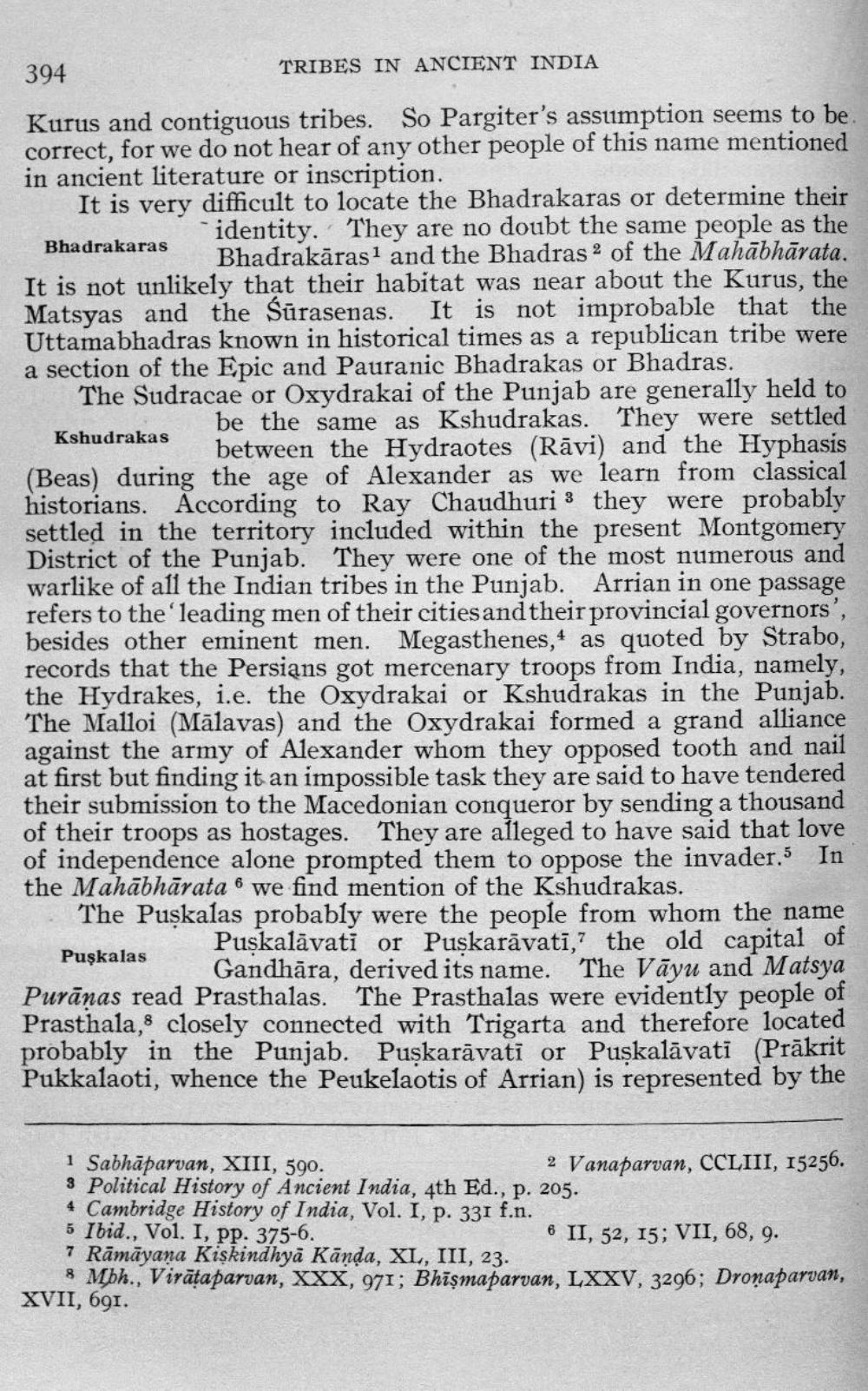________________
394
TRIBES IN ANCIENT INDIA Kurus and contiguous tribes. So Pargiter's assumption seems to be correct, for we do not hear of any other people of this name mentioned in ancient literature or inscription. It is very difficult to locate the Bhadrakaras or determine their
identity. They are no doubt the same people as the Bhadrakaras
arakaras Bhadrakāras 1 and the Bhadras 2 of the Mahābhārata. It is not unlikely that their habitat was near about the Kurus, the Matsyas and the Sūrasenas. It is not improbable that the Uttamabhadras known in historical times as a republican tribe were a section of the Epic and Pauranic Bhadrakas or Bhadras.
The Sudracae or Oxydrakai of the Punjab are generally held to Kshudrakas
be the same as Kshudrakas. They were settled rakas between the Hydraotes (Rāvi) and the Hyphasis (Beas) during the age of Alexander as we learn from classical historians. According to Ray Chaudhuri 3 they were probably settled in the territory included within the present Montgomery District of the Punjab. They were one of the most numerous and warlike of all the Indian tribes in the Punjab. Arrian in one passage refers to the leading men of their cities and their provincial governors', besides other eminent men. Megasthenes, 4 as quoted by Strabo, records that the Persians got mercenary troops from India, namely, the Hydrakes, i.e. the Oxydrakai or Kshudrakas in the Punjab. The Malloi (Mālavas) and the Oxydrakai formed a grand alliance against the army of Alexander whom they opposed tooth and nail at first but finding it an impossible task they are said to have tendered their submission to the Macedonian conqueror by sending a thousand of their troops as hostages. They are alleged to have said that love of independence alone prompted them to oppose the invader. In the Mahābhārata 6 we find mention of the Kshudrakas. The Puşkalas probably were the people from whom the name
Puskalāvati or Puskarāvatī,” the old capital of Puşkalas
SS Gandhāra, derived its name. The Vāyu and Matsya Purānas read Prasthalas. The Prasthalas were evidently people of Prasthala,& closely connected with Trigarta and therefore located probably in the Punjab. Puskarāvati or Puşkalāvati (Prākrit Pukkalaoti, whence the Peukelaotis of Arrian) is represented by the
1 Sabhāparvan, XIII, 590.
2 Vanaparvan, CCLIII, 15256. 3 Political History of Ancient India, 4th Ed., p. 205. 4 Cambridge History of India, Vol. I, p. 331 f.n. 5 Ibid., Vol. I, pp. 375-6.
6 II, 52, 15; VII, 68, 9. 7 Rāmāyana Kiskindhyā Kānda, XL, III, 23.
8 Mbh., Virātaparvan, XXX, 971; Bhīşmaparvan, LXXV, 3296; Dronaparvan, XVII, 691.




